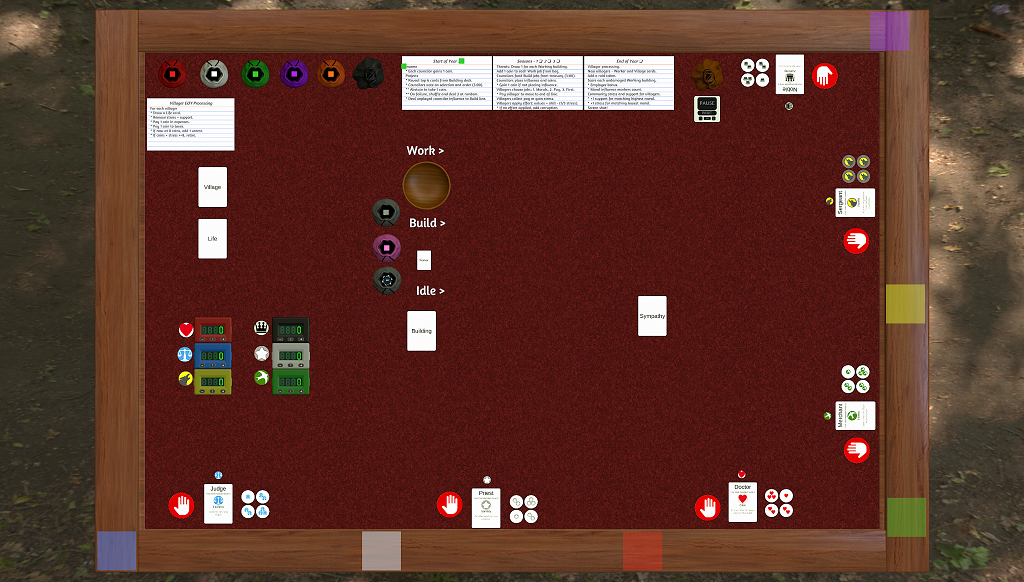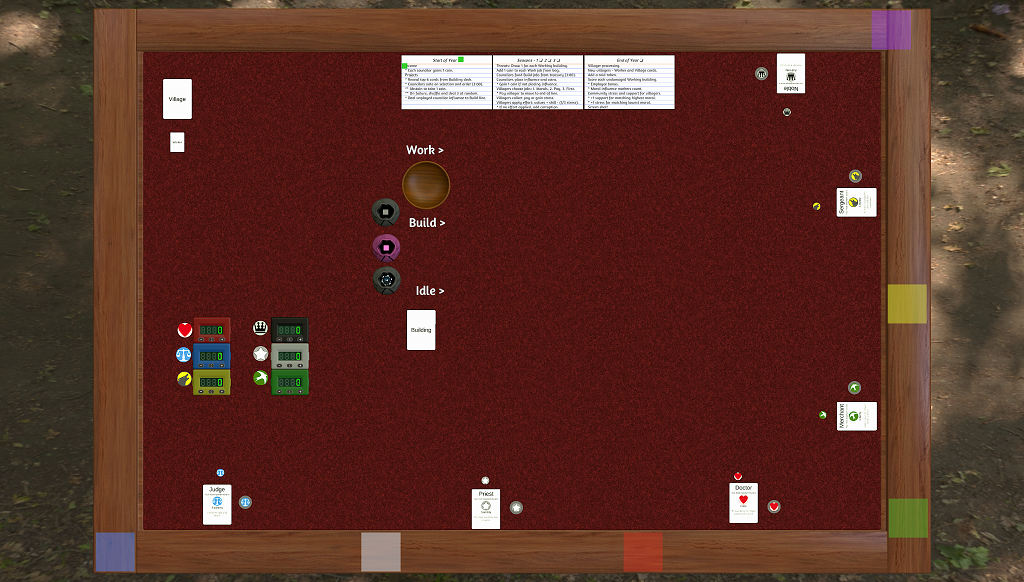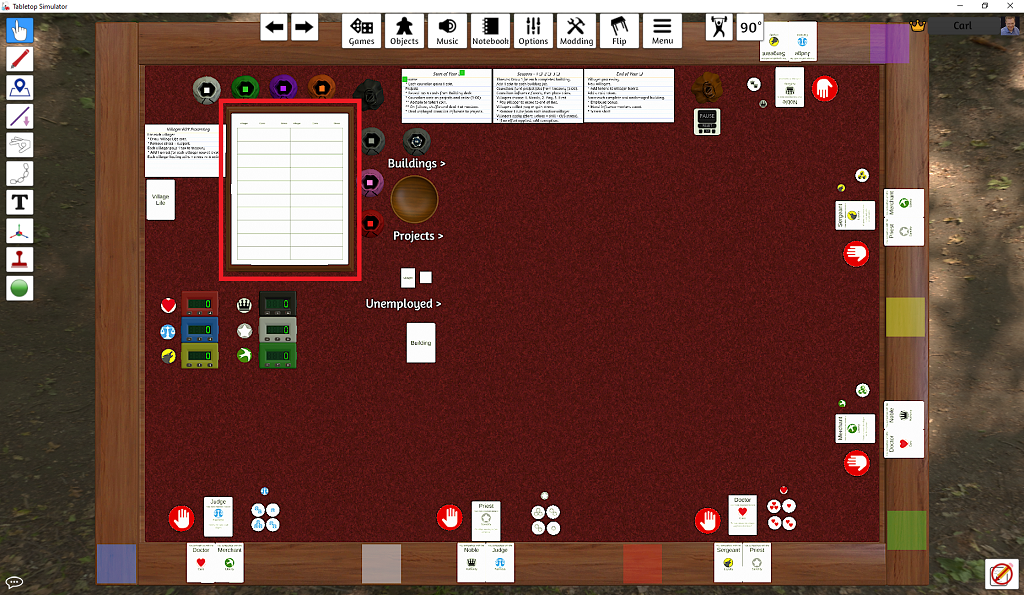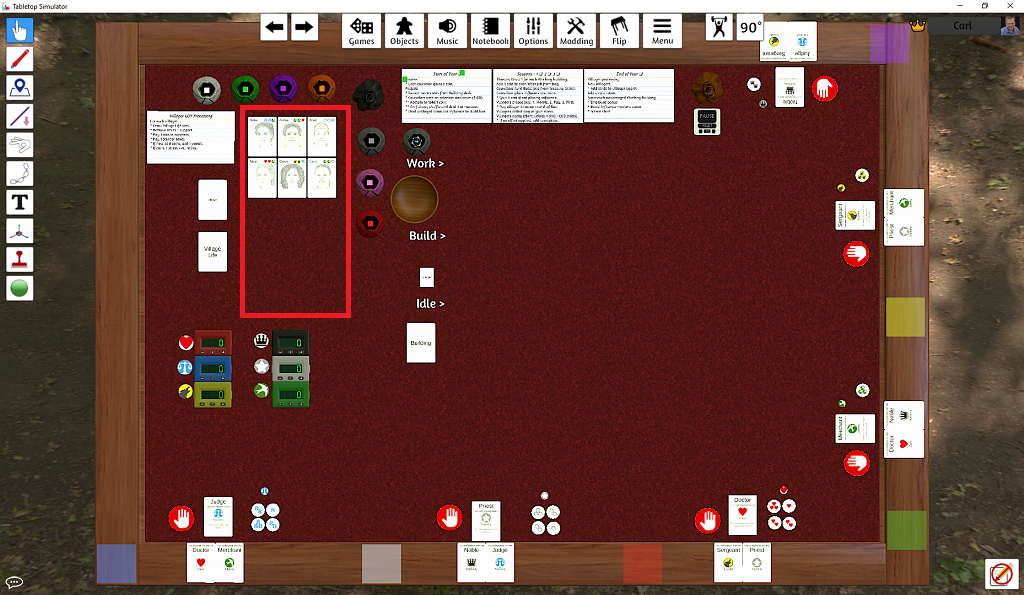I just finished a three-year playtest of Villanostra, after hacking out lots of the mechanisms and adding in annual moral-based threats. The threats are simplistic: they all do the same thing, no matter what moral is drawn. But they can only be alleviated by spending effort from a building associated with the moral. That worked… okay. It still led to some interesting choices, even though the buildings were effectively all identical. I’m torn, because I want the threats and buildings to feel distinct, but the game already takes so long to play that I’m scared to add any more complexity.
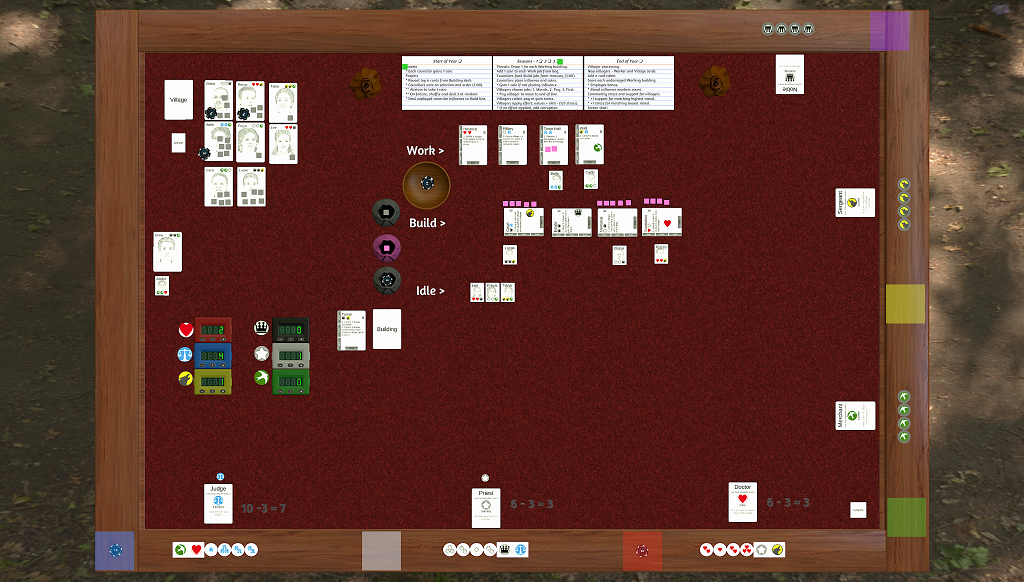
I tried at first having each councilor care only about their primary moral, with no secondary / sympathy morals. That created a lot of situations where a councilor had no motivation to act at all, so I added the secondary morals back in.
I tried starting with random villagers. That created an ongoing situation where one councilor had no influence on any villager, which was intolerable. So I went back to having each councilor choose a starting villager. But I’d like to always start with 3 villagers, so that’s not a great solution. For the next playtest, I’m removing every villager that none of the players can influence, but that doesn’t guarantee that each councilor will always have a matching villager in play. Ugh.
I changed scoring to occur only at the end of the game (three years, for now). I’ve also added a rule that each player’s score is reduced by the number of villagers having more than 4 stress. The Judge scored 7 points, The Priest and the Doctor each scored 3. 10 points seems like a good target.

